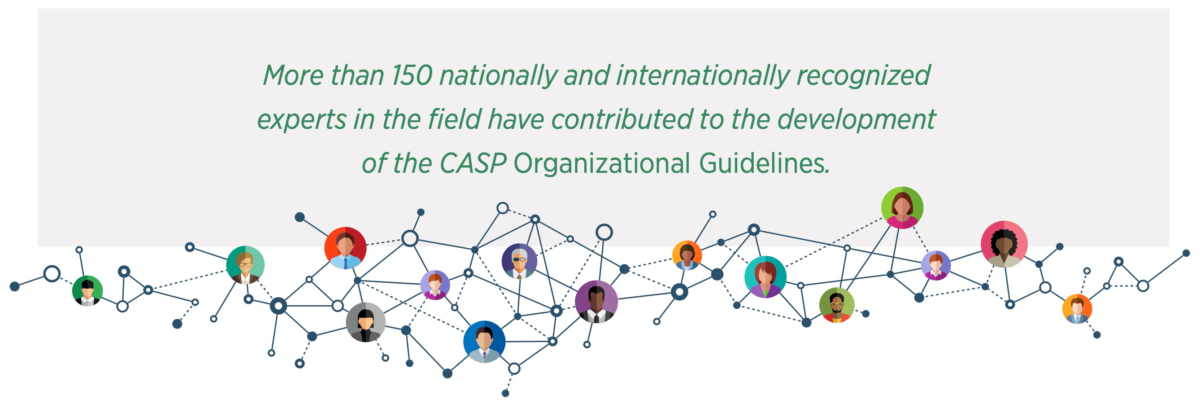CASP Organizational Guidelines

History
Work on the CASP Organizational Guidelines began in 2017 when the CASP Board of Directors convened a meeting of 12 stakeholders that included representatives of consumer groups and individuals with expertise in operating autism service provider organizations. That group started to identify and discuss core domains essential to successfully operating organizations that provide high-quality services to autistic individuals.
Development of the CASP Organizational Guidelines
Subsequently, two steering committees were created to oversee the development of the CASP Organizational Guidelines: the Executive Steering Committee (ESC) and the Organizational Guidelines Steering Committee (OGSC).
Members of each of these committees are listed here.
Responsibilities of the ESC included resolving conflicts where subject matter experts (SMEs) disagreed, reviewing content prior to production, and supporting the dissemination and adoption of the finished product. In addition to assisting with the responsibilities of the ESC, the OGSC worked with the editor-in-chief/project manager to recruit and vet SMEs. The OGSC also reviewed and approved content outlines before the SMEs began work on a first draft of each chapter.
An open call for SMEs was made via the CASP website and newsletter. On an application posted online, applicants identified their areas of expertise in organizational operations, submitted a statement of interest and their curriculum vitae, and indicated whether they preferred to participate as a primary content writer (PCW) or reviewer. The OGSC then reviewed all applications and ranked them based on the information provided. One PCW and at least three reviewers were selected for each chapter. More than 150 nationally and internationally recognized experts in the field have contributed to the development of the CASP Organizational Guidelines, including the original group of 12 experts convened when this project began.
A list of contributing SMEs can be found here.
The PCWs were responsible for producing an outline and a preliminary draft of their assigned chapters. The preliminary draft was sent to the reviewers, who were asked to comment on its completeness, its accuracy, and whether its information and recommendations reflected consensus in the autism services field. Reviewers’ comments were de-identified and compiled before they were shared with the PCWs for consideration when they were preparing a second draft of their chapters. In some cases, an additional content writer was recruited from the SME application pool or from outside the field of ABA (e.g., for topics on business operations) to assist with the production of the second draft.
A team of professional editors, who were to make recommendations regarding the organization and flow of the content, consistency of tone and style across chapters, and copyediting, reviewed the second drafts. The PCWs remained engaged during the professional editing process to answer questions and ensure that content errors were not introduced inadvertently. The ESC and CASP Board of Directors were given an opportunity to comment on the edited chapters prior to final copyediting and graphic design.


